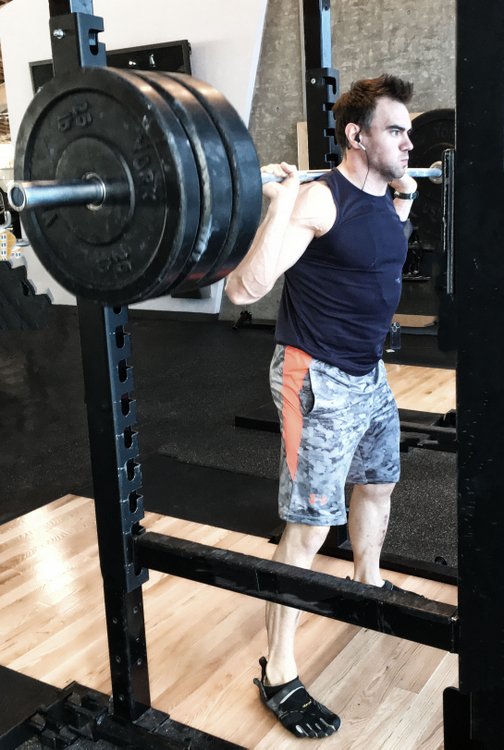Everyone has experienced fatigue in some form, level, or intensity. Sometimes feeling of low energy can suddenly appear without doing any kind of physical or mental activity. Though we all know what fatigue is, it is difficult to define. In simple terms fatigue can be explained as a physiological entity that decreases or seizes body performance, be it physical or psychological in nature. Furthermore, numerous internal (metabolic and mechanical overload) as well as external (temperature, elevation, etc) factors affect fatigue. In this article, we’ll discuss how fatigue affects physical activity and piece together this mysterious topic.
WHAT IS MUSCLE FATIGUE
Muscle fatigue is generally defined as a reduction in the ability to sustain muscular work. Physical fatigue can have a central (CNS) and/or muscular component. Central Nervous System (CNS) initiates force production by sending signals and recruiting motor units (MUs) that are made up of motor neuron and muscle fibers. The electrical impulse travels from CNS via nerve activating associated muscle fibers to contract – performing work. Muscle fibers generate contractions by using available ATP, while simultaneously resynthesizing it through three bioenergy pathways. Any interruptions in this mechanism causes disruption or delay in production of force, and therefore increases overall fatigue.
ENEGRY SYSTEM TIMELINE
To see how and why fatigue settles in, lets analyze a continuous physical activity and see how energy is supplied and generated. Any physical exercise involving effort will generally follow similar process of producing energy in order to initiate and sustain the activity. Some exceptions do exist on extreme sides of physical effort spectrum. For example, jumping as high as you can, or sprinting 50 meters (150 feet) will predominantly stimulates ATP-CP System. On the other hand, generated energy for a leisurely walk will be mostly supplied through Oxidative system for ATP resynthesis. Physical activities that are in between these extreme end parameters (the kind that will make you sweat, lasting longer than few seconds) engage all three energy systems in ATP resynthesis. Whether you are running 5 kilometres (around 3.12 miles), playing a game of basketball or soccer, or performing an ongoing weight training session in the gym, the body utilized its energy systems in the following manner:
ATP-CP System – Initial momentum: 0 – 10 seconds
From the very beginning, all three energy systems go to work but, the most dominant one is ATP-CP. The actual ATP storage within muscle is very small, approximately 8 mmol/kg of wet weight (thats tiny). As you use up ATP and the levels fall below 5 mmol/kg of wet weight, the body triggers ATP-CP system to get involved and begin resynthesizing (put back together) ATP. Intense exercise up to 6 seconds has ATP-CP as the dominant energy system.
CP (creatine phosphate) is located inside muscle cells and available for immediate use. Therefore, regenerating ATP is and instantly fast process that is fed back directly into sarcomeres to continue producing contractions. However, the CP levels are also fairly small, around 26 mmol/kg of wet weight, and are used up quickly. This lasts up to 10 seconds of strenuous physical activity.
Anaerobic Glycolysis System – Increase Power: 10 -70 seconds
Any exercise lasting longer than just a few seconds engages Anaerobic Glycolysis. Glucose is taken up from the blood as well as glycogen stores and utilized within muscle. This glucose goes through a series of reactions and broken down into two smaller molecules called pyruvate(s). The process generates an overall total of 2 ATPs.
Anaerobic Glycolysis bypasses ATP-CP after 10-15 seconds of strenuous activity, and doubles its resynthesis efforts by around 30 seconds mark. Glycolysis via anaerobic pathway will keep going as long as you are able to maintain your performance without oxygen, which is around 2-3 minutes for a trained individual. This system is also very fast at ATP resynthesis, but produces byproducts such as hydrogen and free radical phosphorus ions; which begin to inhibit muscular contraction, generating a burning sensation within working muscles. No matter how hard you resist this burning discomfort, you’ll begin to slow down initially set activity pace. Slower tempo increases air intake, sending more oxygen towards working muscles.
Aerobic System – Set Pace: 70 seconds onwards
The Oxidative System continuously produces energy for other bodily functions such as digestion and cardiovascular regulation. Since the beginning of selected physical activity Oxidative System contributed towards ATP resynthesis on smaller scale. Aerobic system is the slowest to generate energy however, once it gathers momentum, it becomes a major producer. For example, in a 10 second sprint aerobic system contributes about 13% of necessary energy; and becomes an equal 50% energy provider by the 70 seconds mark. As time goes on, the five-minute intense run is fuelled primarily through Oxidative System operating at a 80% of total ATP resynthesis.
Aerobic system uses oxygen to breakdown (oxidize) two primal fuel sources – fat (in form or free fatty acids) and glucose. Aerobic system is also capable of using amino acids (muscle catabolism) however, such conditions need to include very low glucose levels along with extensive exercise periods. For the purpose of this article, we’ll concentrate on fat and sugar as the main substrates.
As the exercise session continues on, the body requires oxygen and lowers its intensity in order to increase its supply. The slower activity tempo increases oxygen supply within working muscles resulting in increased oxidation of glucose and fat through Kreb’s cycle (aka TCA cycle) and electron transport chain. Glucose goes through complete oxidation as it’s converted to acetyl-CoA and fed into Kreb’s cycle followed by electron transport chain within mitochondria. Fat is broken down into free fatty acids (FFAs) which are then converted to acetyl-CoAs and proceeded in same pathways to produce energy. Glucose oxidation involves less reactions, thus faster than fat oxidation. Glucose oxidation yields total of 36 ATPs, compared to Anaerobic glycolysis which only nets 2 ATP.
Lipid oxidation is slower then glucose equivalent but it produces an even bigger ATP yield. For example, palmitic acid (of 16 carbons) generates a total of 130 ATPs. Aerobic system not only increases its energy producing responsibilities during set pace exercise sessions, but also supplies majority of needed fuel afterwards (post training).
METABOLITES and FATIGUE
 During exercise when oxygen is not supplied fast enough to meet muscle’s needs (anaerobic glycolysis) metabolite byproducts such as hydrogen ions, ADP, Pi, lactate and potassium ions begin to accumulate inside muscle cells. Increase in hydrogen ions causes a decrease in muscle cell pH levels – a condition called acidosis. Acidosis and accumulation of these metabolites begin to negatively impact muscular contractibility, contributing to overall fatigue. The affects include:
During exercise when oxygen is not supplied fast enough to meet muscle’s needs (anaerobic glycolysis) metabolite byproducts such as hydrogen ions, ADP, Pi, lactate and potassium ions begin to accumulate inside muscle cells. Increase in hydrogen ions causes a decrease in muscle cell pH levels – a condition called acidosis. Acidosis and accumulation of these metabolites begin to negatively impact muscular contractibility, contributing to overall fatigue. The affects include:
- inhibition of specific enzymes involved in metabolism and muscle contraction,
- inhibition of the release of calcium (Ca2+) from its muscle sites to trigger contractions,
- interference with the muscle’s electrical charges (action potential).
Acidosis has been referenced to cause burning sensation within working muscles. Continuation of intense style exercise further accumulates metabolites within muscle cells, raising physical fatigue and decreasing overall contractibility and production of force.
LACTATE and FATIGUE
Lactate is a byproduct of anaerobic glycolysis. For many years, Lactate or Lactic Acid were perceived to be a waste product and the main cause of acidosis. This theory has been debated for number of years, with current model portraying the opposite understanding. The evidence points to the final product of anaerobic glycolysis – pyruvate. During intense exercise (absence of oxygen) produced pyruvate is unable to be fully transported to mitochondria (for conversion to acetyl-CoA). This causes pyruvate to accumulate within the muscle cell (cytosol). Too much pyruvate inside the muscle cell triggers the decrease in ATP resynthesis via Anaerobic Glycolysis, therefore indirectly increasing fatigue. So in a sense, pyruvate may be viewed as another metabolite produced during Anaerobic Glycolysis. This potentially poses a serious energy supply problem for any high intensity exercises of short duration. In order to prevent inhibition or decrease of energy production by Anaerobic pathway, some pyruvate is transported out of the muscle cells, but not fast enough to make significant difference. To fix this posing issue, majority of left over pyruvate is converted to lactate. The reaction details are below:
Pyruvate + NADH + H+ —> Lactate + NAD+
Production of lactate is beneficial in several ways:
- Pyruvate is converted to lactate thus, will not slow down Anaerobic Glycolysis pathway.
- The reaction further uses up a proton (H+), the byproduct that actually causes acidosis.
- Furthermore, production of lactate also produces NAD+ which is an important substate within Anaerobic Glycolysis and Aerobic reaction series.
In the end, lactate appears to slow down and not cause acidosis and onset of fatigue. Lactate studies are still on-going and it is now used as a effective measurement for endurance training and VO2max.
FATIGUE and EXTERNAL FACTORS
Muscle fatigue can and is influenced by external environment conditions. For instance, intense physical exercise during the heat (high temperature) increases the rate of fatigue. In order to regulate the temperature, blood flow is increased to the skin hence, portion of circulation is being diverted away from working muscles. Environmental conditions are also an active research area into their affect on the body and onset of fatigue.
FINAL THOUGHTS
Fatigue is a vital physiological response of the body towards physical and mental activity. The body uses ATP for all its activity and requires a preventative mechanism in order not to run out of energy. Nearly full depletion of ATP poses serious physiological consequences on the body including irreversible muscle damage and/or possible cell death.
Muscle fatigue occurs by delaying or inhibiting a particular metabolic and/or mechanical process involved in muscular contraction. Research regarding human energy systems is an ongoing endeavour. We strive to understand how the body generates, distributes, and conserves energy upon encountering stimulus and onset of fatigue. Number of energy reserves including ATP and glycogen appear to affect muscle fatigue. Fatigue is a complex topic encompassing both physiological and psychological factors affecting body systems. For a targeted Periodized Training Protocol taking into account the above mentioned information, learn more about Stronger Leaner Faster Books.






